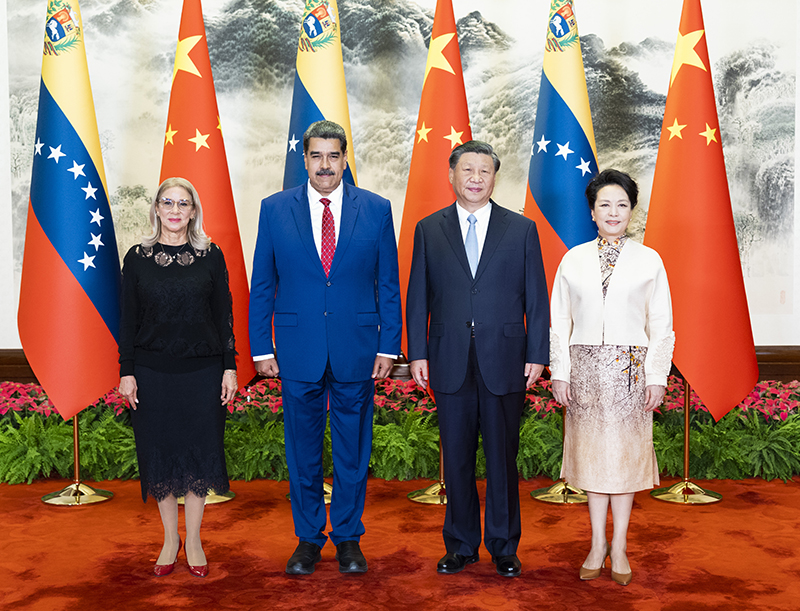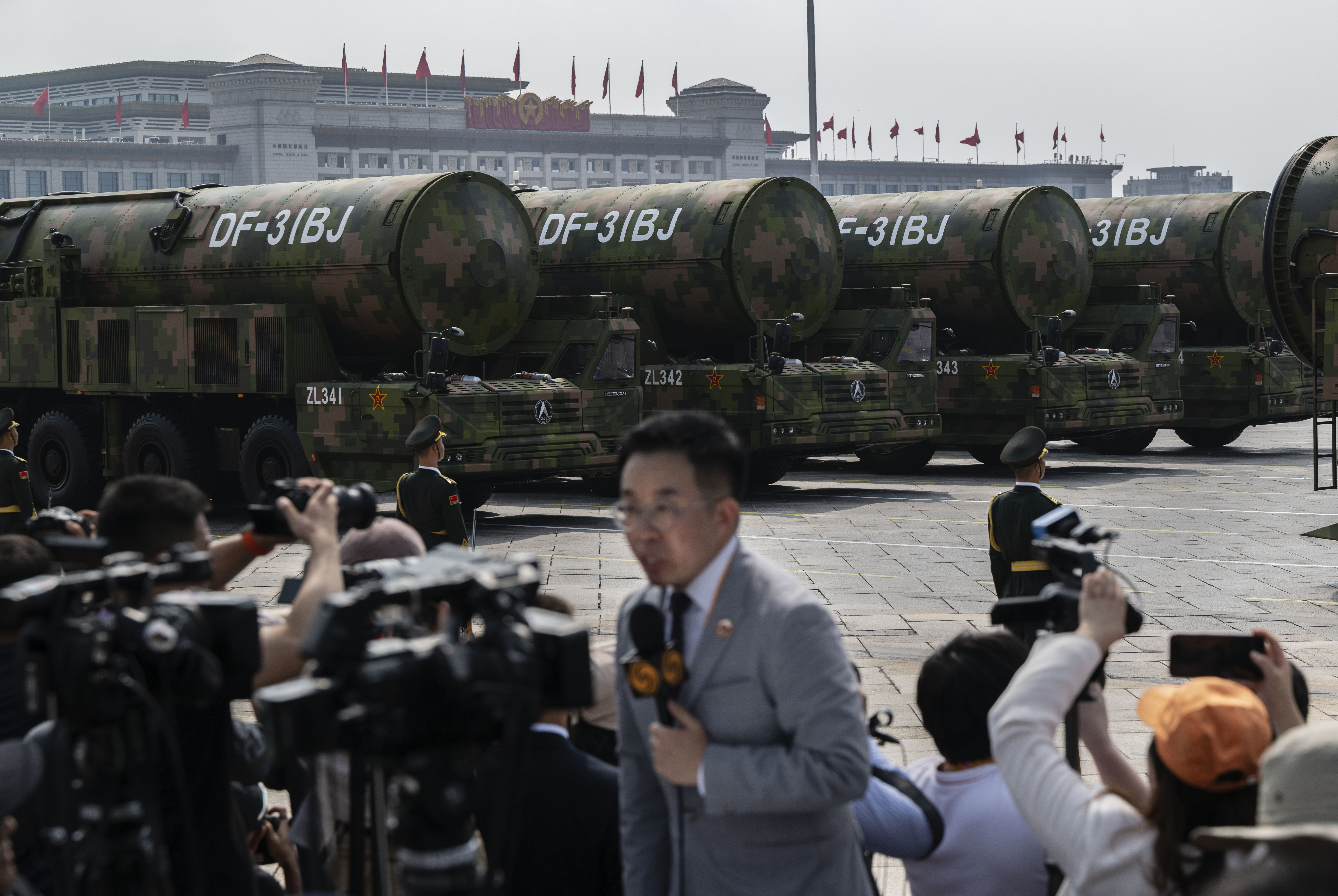
PLA Air Force Increases Flexibility of Combat Support Units
PLA Air Force Increases Flexibility of Combat Support Units
In early November, the Chinese People’s Liberation Army (PLA) published photographs of army helicopters taking off from an “air force station” of the Eastern Theater Command during a “trans-regional operation” in late October (China Military Online, November 10). “Air force station” likely refers to the “field station” or combat support unit that services the airbase from which the helicopters took off. The photographs visually substantiate an article from June in which it was reported that all the field stations of an unspecified air defense base of the Eastern Theater Air Force had developed the capability to conduct joint combat support. The report mentioned that the field stations were servicing aircraft of various types from different services, even including a vignette of one field station conducting “combat sustainment” for an army helicopter in addition to servicing fighters and special mission aircraft (PLA Daily, June 16). The field stations’ actual joint combat support capability is likely to be nascent, but it rests on a foundation of greater flexibility that the field stations have achieved over the past decade to operate outside their routines and to service various types of aircraft. That foundation should also make the combat support units of the PLA Air Force (PLAAF) a more resilient force that is better able to support agile aviation units.
Clarifying Bases and Stations
The PLAAF’s air defense bases (空防基地) are commands, not installations. They combine multiple units from different branches of the PLAAF (aviation, radar, air defense, communications) under a single command that regularly trains to deploy and to fight as a combined-arms team. Similarly, field stations (场站) are units, not facilities. They are the highest-level formations providing combat support to an air defense base’s aviation units. Specifically, field stations administer airbases, provide fuel and ordnance, and conduct air traffic control, among other responsibilities. Put simply, field stations enable the PLAAF’s aviation units to fly.
How Field Stations Have Built Combat Support
The report in question was published in PLA Daily, the mouthpiece of the Chinese Communist Party’s Central Military Commission, which is roughly equivalent to the US Department of Defense (PLA Daily, June 16). The article was typically long on vague allusions and short on useful details. In line with PLA Daily’s didactic purpose, the article focused on how the air defense base has approached building its joint combat support capability instead of on the types and degree of joint combat support that its field stations can provide.
The field stations did not take a simple additive approach to expanding the types of aircraft that they can service. The article quoted a staff officer at one field station saying that the expansion of their capabilities required structural reorganization, not merely the “simple combination of models for servicing single types of aircraft.” Therefore, the same field station has established different types of combat support groups, such as a “frontline specialized unit” group, a group to service mixed formations of dissimilar aircraft, and a “maximally streamlined” group (PLA Daily, June 16). One can only speculate that the first and last groups are deployable groups servicing aircraft in combat zones and at austere airstrips, respectively. In the past the PLAAF has experimented with mobile field stations and attempted to “gauge [combat] units’ minimum combat support needs in wartime” (China Brief, September 10, 2021). According to the PLA Daily report, the field stations took a similar approach to the storage of materiel. Rather than storing vast amounts of materiel for every contingency, they have opened “channels for the rapid supply of jet fuel, ordnance, and materiel” with “neighboring airfields” in case of emergencies.
It is possible that other services have deployed personnel to assist the field stations with joint combat support. Although the field stations sent their own personnel to other operational units to “understand and grasp the support needs of different types of aircraft under the conditions of different missions,” it is practically impossible to train personnel to maintain all types of aircraft, and their current “joint combat support model” entails “mutually servicing aircraft of the same type and together servicing aircraft of different types,” implying that it is not just PLAAF personnel who are involved (PLA Daily, June 16).
At the end of 2022, units of the Eastern Theater Navy and Air Force practiced the first half of the aforementioned formula, “mutually servicing aircraft of the same type” (National Defense and Military Affairs at Noon, December 13, 2022). Four Su-30MKK fighters of the PLAAF’s 85th Aviation Brigade landed at a PLA Navy airbase at which aircraft of the same type were stationed (National Defense and Military Affairs at Noon, December 13, 2022). The navy field station then “overhauled and inspected,” refueled, rearmed, and launched the air force aircraft (National Defense and Military Affairs at Noon, December 13, 2022). It is telling that this event was rare enough to qualify as newsworthy. Servicing a common type of aircraft is a low bar for jointness, but the specific example of joint combat support that was previously mentioned—an air force field station’s “combat sustainment” of an army helicopter—may not refer to anything more than refueling or rearming. This itself does not set the bar much higher. Therefore, one should be skeptical of the degree of jointness that the field stations of the aforementioned air defense base have achieved in just a few years of effort. However, the field stations would not be clearing these bars if they had not first undergone a transformation that prepared them for the task.
Increasing Field Stations’ Flexibility
The degree of jointness that the field stations have achieved is a byproduct of a successful, years-long effort to enhance the flexibility of the PLAAF’s field stations. At the beginning of the 2010s, field stations were loath to work outside their routines—and were sometimes incapable of doing so—and aviation units were reluctant to rely on other field stations (China Military Television Online, May 15, 2017; PLA Daily, May 15, 2017). Therefore, when pilots and aircraft were deployed for training away from their home airbase, the field station servicing their unit would also deploy personnel and equipment with them—by road and rail. The PLA negatively referred to this practice as “moving house” (PLA Daily, December 19, 2015). The inefficiency of this practice “severely” impeded deployments (PLA Daily, December 19, 2015; PLA Daily, May 15, 2017). For example, it took elements of one field station nine days and nights to arrive at the airfield where an aviation unit was deploying for training (PLA Daily, May 15, 2017). As the PLA put it, aviation units were “tied down by their families” (China Military Television Online, May 15, 2017).
In 2011 the PLAAF had already established a work group to study how to cut its aviation units’ logistical tails and implement a “zero accompaniment” (零伴随) combat support model (PLA Daily, May 15, 2017). “Zero accompaniment” refers to aviation units deploying without elements of the field stations that usually service their aircraft. The PLA described it pithily as “moving in with just a handbag” (PLA Daily, May 15, 2017). Of course, it requires that field stations throughout the PLAAF be able to work outside their routines and service aircraft that they usually do not.
A key factor in accomplishing “zero accompaniment” has been training field stations’ personnel to have “one specialty and many capabilities (一专多能)” or to be “multi-capable” as the US Air Force puts it (PLA Daily, December 19, 2015). The term is at least as old as the PLAAF’s efforts to implement “zero accompaniment,” but it is not exclusive to the air force. “T-type warriors” (T型战士) is another more recent term for multi-capable personnel (PLA Daily, November 15). The PLA has promoted “multi-capability” throughout the force not only to enhance units’ flexibility, but also to increase the redundancy of certain capabilities in units, thereby improving their survivability. However, as old as the effort to promote “multi-capability” is, apparently it was not until March 2023 that one field station of the Eastern Theater Air Force implemented its own cross-training program to develop “multi-capable” personnel (PLA Daily, September 12).
The PLAAF has implemented “zero accompaniment” gradually. In 2012 the PLAAF experimented with “zero accompaniment” during its annual Red Sword exercise (PLA Daily, May 15, 2017). By 2015 the PLAAF had implemented “zero accompaniment” at all its bases to which units deploy for major exercises, such as Dingxin Airbase (Xinhua News Agency, November 10, 2019). “Zero accompaniment” now seems to be more widespread throughout the PLAAF. For example, in late July 2023 different aviation units deployed aircraft of various types, including an entire unit of Y-20s, to an unspecified airbase under the Central Theater Air Force (National Defense and Military Affairs at Noon, July 18; PLA Daily, August 8). The field station managed to sustain all the deployed aircraft’s operations throughout the day and into the night (National Defense and Military Affairs at Noon, July 18; PLA Daily, August 8). “Zero accompaniment” may have even affected how “accompanied” deployments are conducted. In September 2023, elements of a field station of the Southern Theater Air Force deployed without their own vehicles and equipment when conducting an “accompanied” deployment (CCTV, September 12). Instead, the field station’s personnel used the local field station’s “zero accompaniment” vehicles and equipment, which likely eased the deployment (CCTV, September 12).
Conclusion
Although it is significant that the PLAAF is working to attain a joint combat support capability, there is still little evidence to suggest that the PLAAF has made great progress in that effort. However, it has less distance to travel because of the strides it has made in changing its institutional culture surrounding combat support and in enhancing the flexibility of its combat support units. Besides building a foundation for joint combat support, the greater flexibility of the PLAAF’s field stations should also help them effectively service aircraft that are frequently redeploying across China, and to do so under austere conditions, a capacity that will become necessary if the PLAAF attempts to emulate the US Air Force’s Agile Combat Employment concept. Therefore, the gradual pace of the implementation of “zero accompaniment” should not detract from its significance. The fact that the PLAAF seems to have largely succeeded in implementing “zero accompaniment” should be taken as evidence that its subsequent efforts, whether to make its combat support units more agile or more capable of joint activity, will also likely succeed in time.


